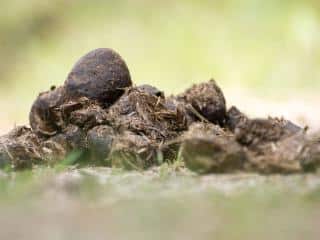

For improving the soil in the vegetable garden, manure is highly favored by gardeners. This organic material from animal and plant sources benefits both the soil structure and the growth of plants.
Also read:
Manure’s key ingredient is solid animal excrements and farm animal urine. It’s often mixed in with bedding material (straw, wood shavings…). It’s very rich in organic materials, around 30%. Since it combines both animal and plant sources, it contains varying amounts of nitrogen, phosphorus, and potassium. However, it’s a material that is very much alive, so it changes over time. Therefore, you can find it in various forms:
 Fresh, it has just been produced by the animals. Use with caution as it might contain germs, residues from animal treatments, and weed remains.
Fresh, it has just been produced by the animals. Use with caution as it might contain germs, residues from animal treatments, and weed remains.Composed of fecal matter and fibrous material (straw), manure offers several benefits for both soil and plants.
 It amends soil, meaning it improves soil structure and texture. Thus, depending on the type and quality of manure, clay soil becomes lighter and light soil becomes more dense. And logically, soil quality increases: higher air porosity, and much better water and fertilizer retention. In this regard, manure plays the same role as compost.
It amends soil, meaning it improves soil structure and texture. Thus, depending on the type and quality of manure, clay soil becomes lighter and light soil becomes more dense. And logically, soil quality increases: higher air porosity, and much better water and fertilizer retention. In this regard, manure plays the same role as compost.Depending on the animals that produce it, you would get different types of manure and therefore different quality (or grades):
→ To learn more: Use horse manure in the garden and vegetable patch
As a general rule, cold manures are more suited to limestone and siliceous soils, and hot manures to clay soils, which they lighten in structure.
→ To learn more: Identify the type of your garden soil

Fresh manure you would simply spread on bare soil throughout the vegetable garden in fall or in winter. It forms a warm cover that acts like thick mulch. As a side benefit, this thick layer significantly disrupts weed growth. And the manure will slowly breakdown until spring to amend and enrich the soil underneath. In spring, as you dig or simply run a broadfork along the plot, the decomposed manure mixes into lower layers below. Count about 2 to 10 pounds per square yard (1 to 5 kg per m²), depending on the type of manure.
Mature or composted manure is spread in spring, just before planting or sowing your first vegetable plants. You just have to lightly incorporate it into the soil with a hoe or claw. You can also toss a shovelful of it at the foot of more nutrient-hungry vegetable plants like tomato or zucchini. Count about 2 pounds per square yard (1 kg per m2).
In any case, absolutely remember never to spread fresh manure directly at the foot of plants as it would literally burn them.
→ To go further: